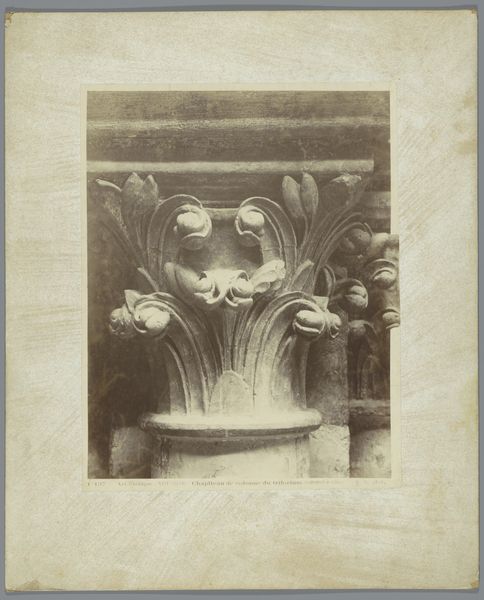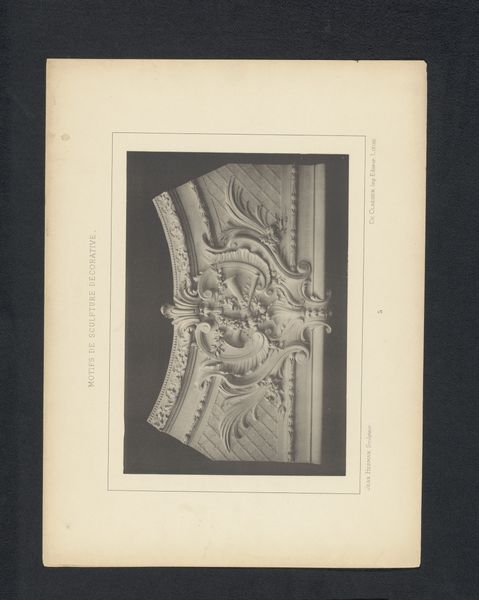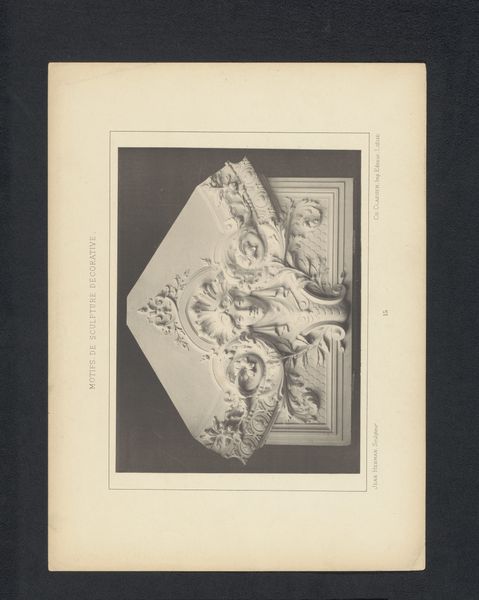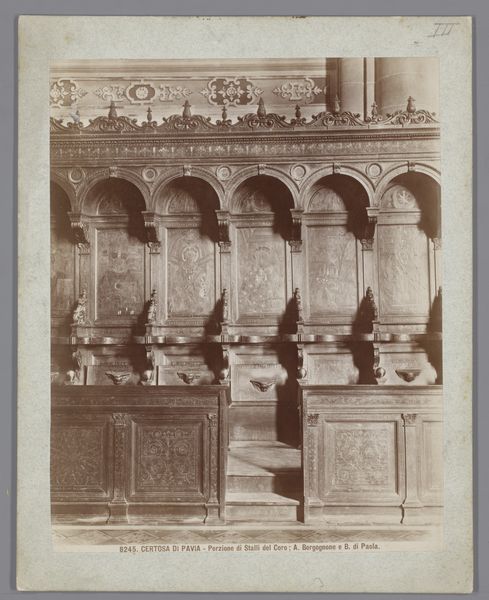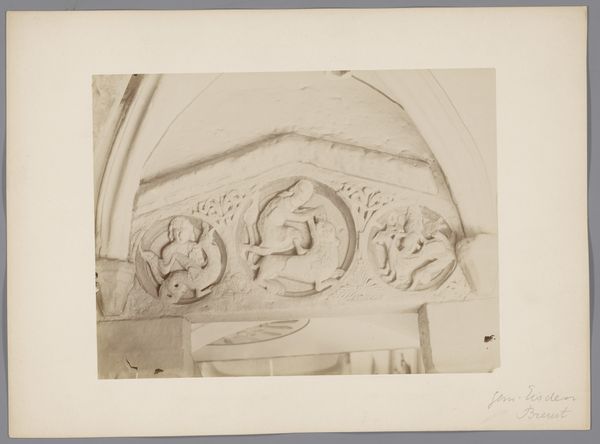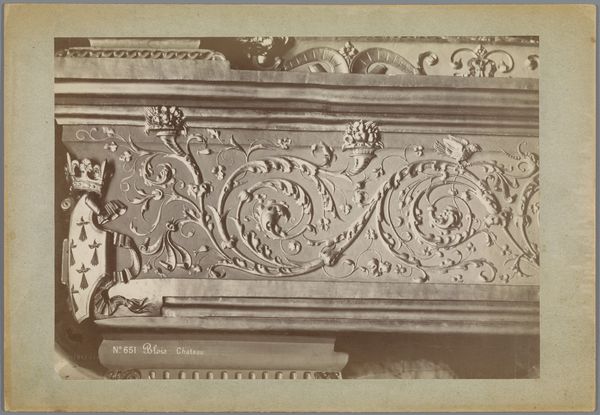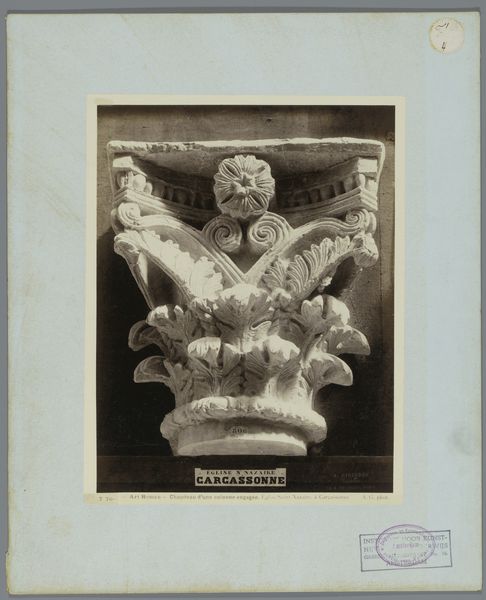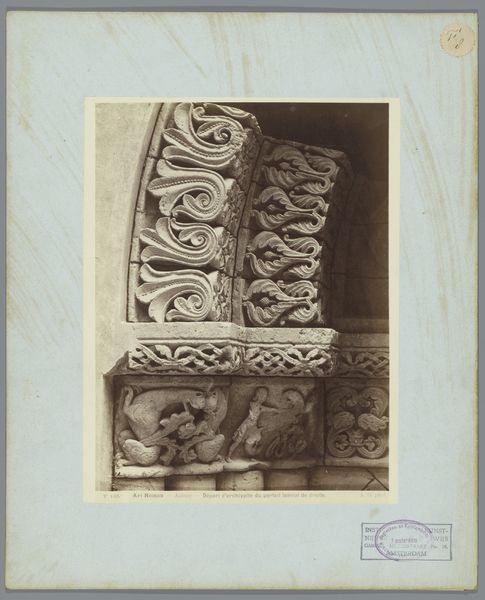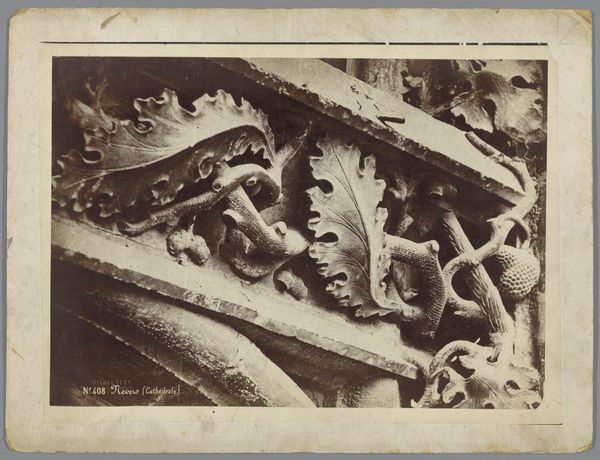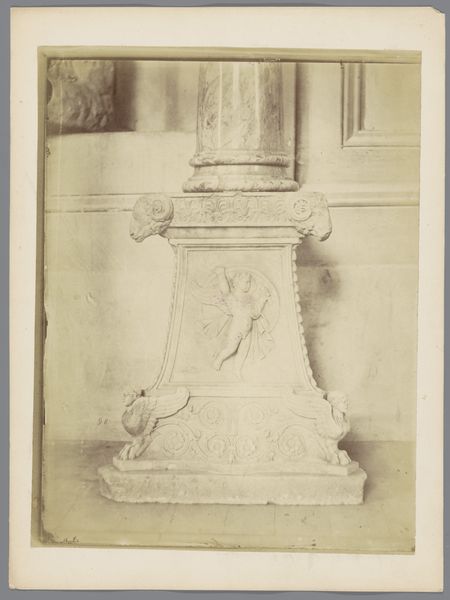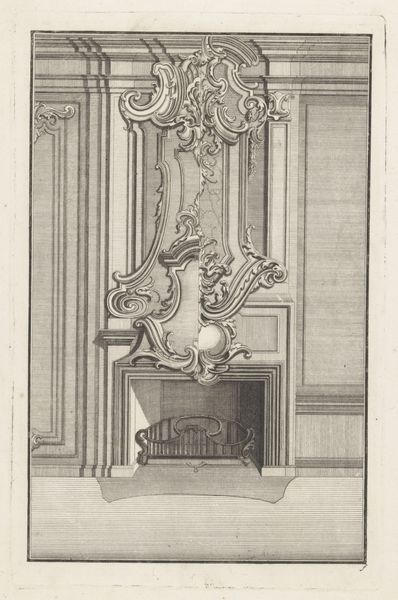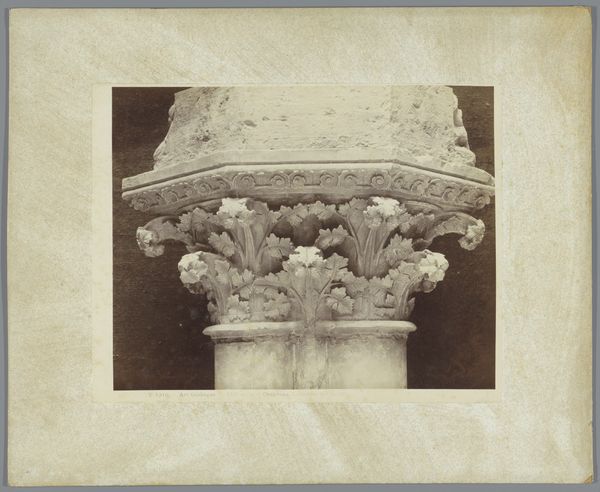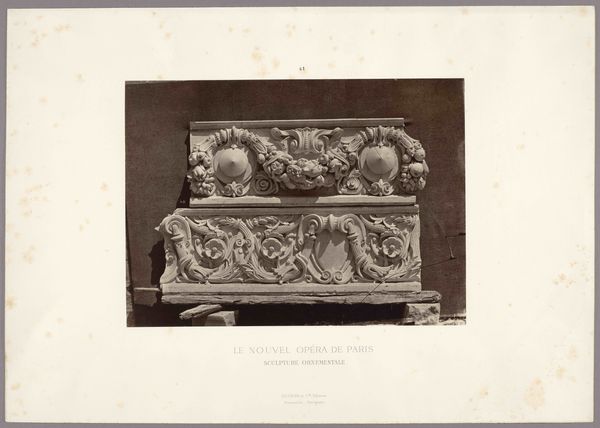
Deel van de tombe van Alfonso Altoviti in de Santi Apostoli te Florence c. 1875 - 1900
0:00
0:00
Dimensions: height 250 mm, width 192 mm
Copyright: Rijks Museum: Open Domain
Curator: We’re looking at a photographic print titled "Deel van de tombe van Alfonso Altoviti in de Santi Apostoli te Florence," believed to have been created between 1875 and 1900 by Edizione Brogi. It depicts, as the title suggests, part of the tomb. Editor: Immediately striking is the almost visceral contrast: death rendered in stark white marble, beautifully crafted, but undeniably a chilling tableau of skull and serpent. Curator: Indeed, the tomb utilizes potent memento mori symbolism. Note how the snake, often representing cyclical time and knowledge, entwines the skull, a stark reminder of mortality. The winged figure as well presents a classic allegorical image of passing. It's fascinating how the baroque influence manifests in the dynamism, despite the static nature of the medium now displayed through this photograph. Editor: Absolutely. The labor involved in the original marble carving must have been immense. Think of the quarrying, the transportation, the skill required to achieve such detail. And here, we have it mediated through a photographic print, democratizing access but also distancing us from the physical making. What's intriguing is that through the photograph it abstracts the context from a particular place to create this copy removed from labor. Curator: That act of translation impacts how we perceive the work. Photography allows the creation of infinitely reproducible images, transforming it into a mass-produced cultural artifact. The original sculpture would've been rooted in a very specific location. This photographic reproduction transcends spatial limitations and emphasizes a generalized awareness about death. The allegorical aspect of such representation gives the piece power over long periods of time. Editor: It's almost an industrialization of mourning. Turning these deeply personal expressions of loss into repeatable commodities through different channels. The photograph in itself functions materially for that. It is striking though how baroque ornamentation transforms death into a statement, literally materialized. Curator: Considering this image through the lens of symbolic representation enriches our appreciation of artistic and cultural memory. Editor: Agreed. Reflecting on the interplay of original artistic craftsmanship and the reproduction inherent in photography highlights questions about value and access that still resonate today.
Comments
No comments
Be the first to comment and join the conversation on the ultimate creative platform.
